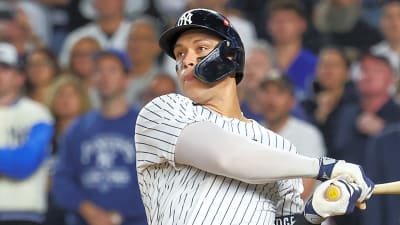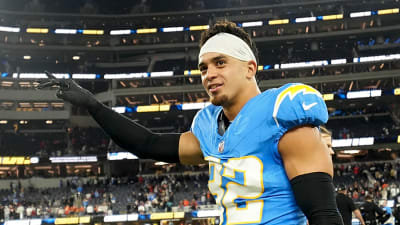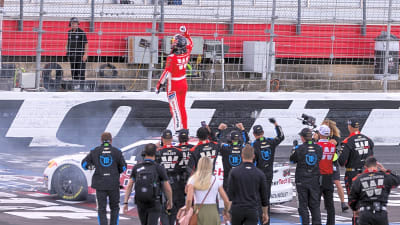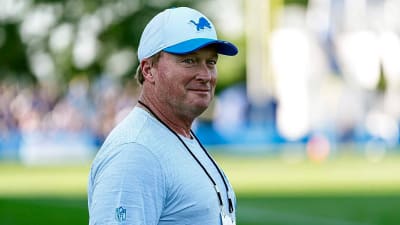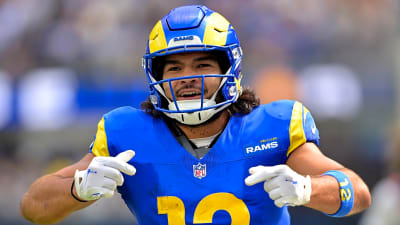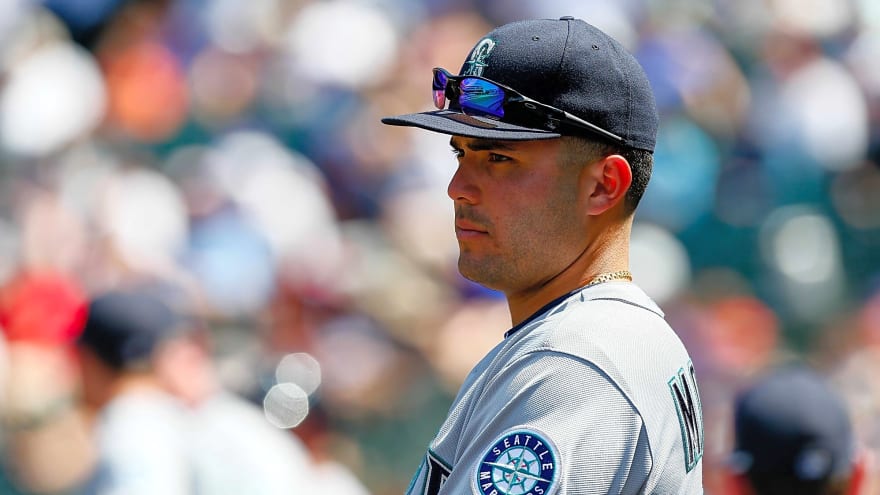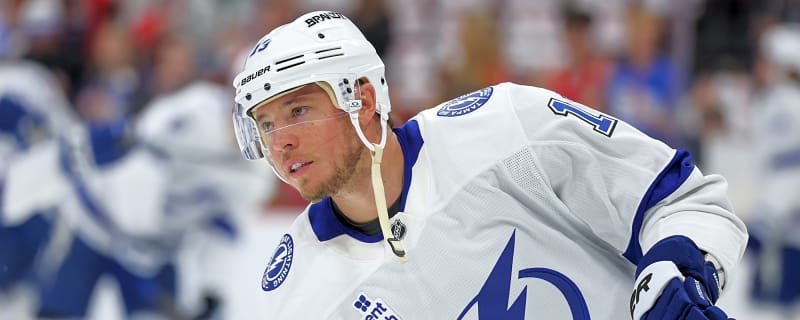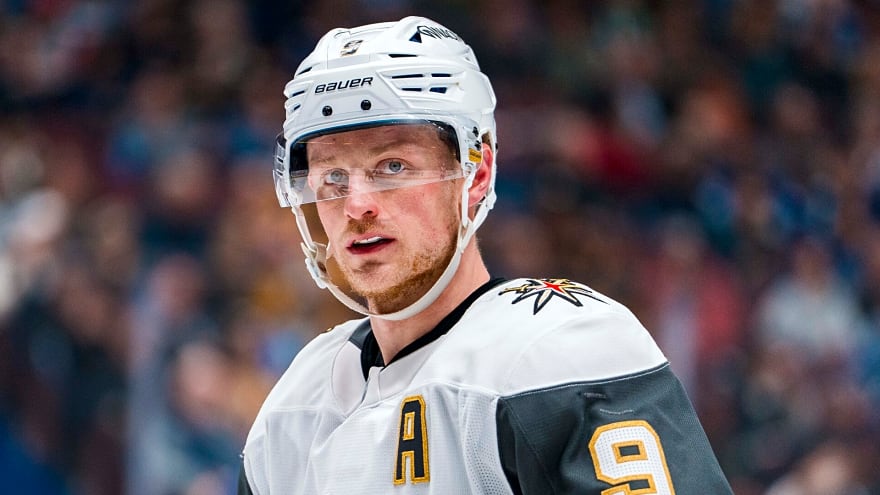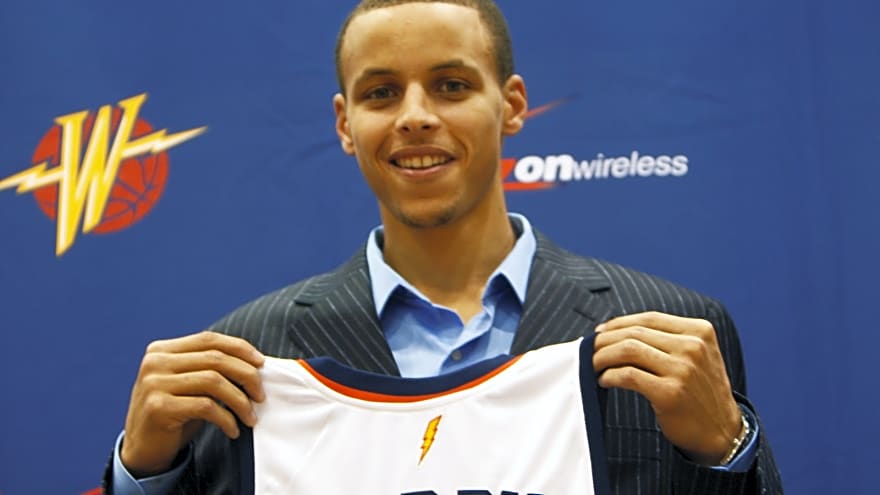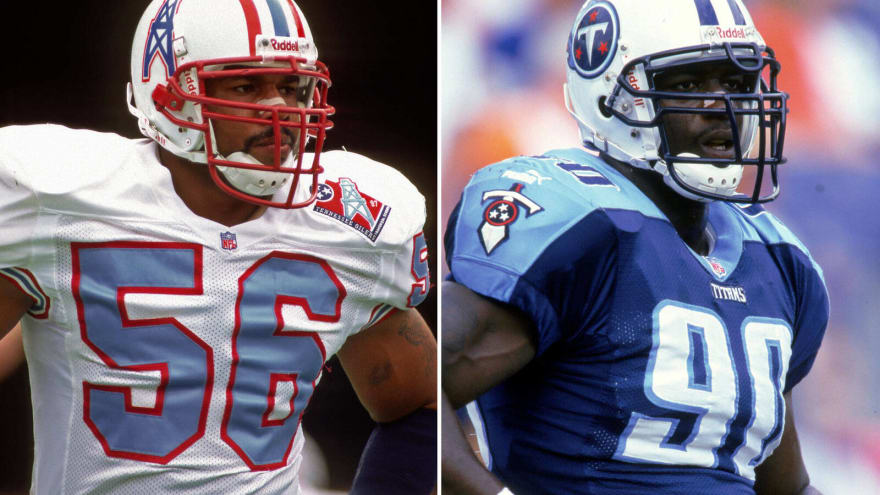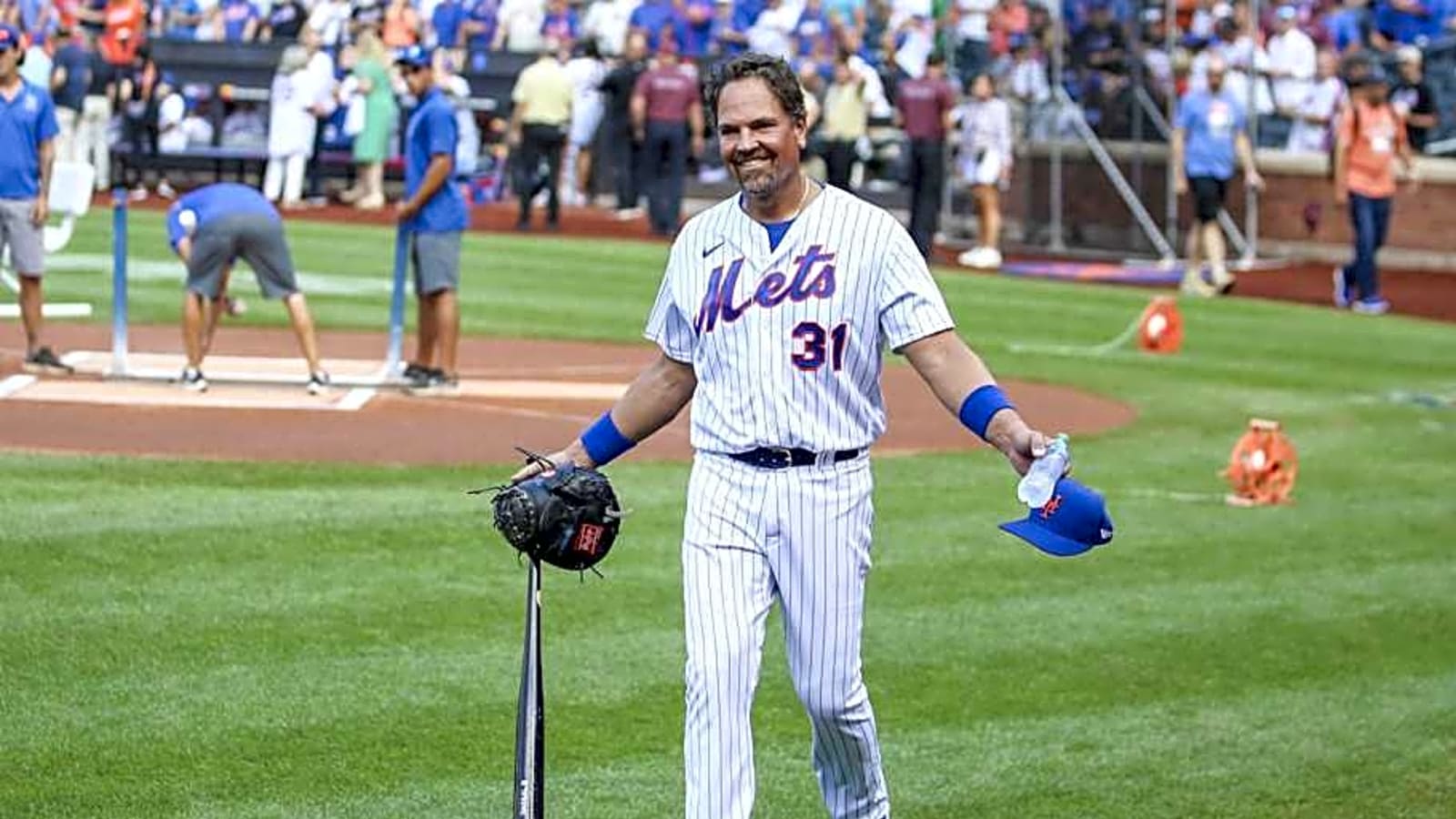
The New York Mets will be bringing back some of their franchise's greatest players this season for a very special day.
On Thursday, the Mets announced they will host their first-ever Alumni Classic Game on September 13. This game will go for three innings beginning at 3:10 p.m., before the Amazins' game against the Texas Rangers. This exciting news comes nearly three years after New York hosted Old Timers Day on August 27, 2022, the first time they held the event in almost 30 years.
This game will feature over 40 former Mets spanning the last decade of Shea Stadium and the first decade of Citi Field.
Some of the most notable players who will be playing for the Shea Stadium team are pitchers Pedro Martínez, Al Leiter, John Franco, and Billy Wagner. Position players include infielders Edgardo Alfonzo, Carlos Delgado, Robin Ventura, and Cliff Floyd, catcher Mike Piazza, and outfielders Carlos Beltràn and Endy Chàvez. Willie Randolph and Bobby Valentine will manage the Shea Stadium squad.
Outfielders Curtis Granderson, Juan Lagares, and Mike Baxter, starting pitchers Matt Harvey, Noah Syndergaard, Johan Santana, Bartolo Colón, and R.A. Dickey, and infielders Ike Davis and Asdrúbal Cabrera will be among the Citi Field team's players. Terry Collins and Jerry Manuel will serve as the team's managers.
The Mets will host a three-inning alumni game on Sept. 13, pitting former players from the Shea Stadium and Citi Field eras against each other.
— Anthony DiComo (@AnthonyDiComo) June 5, 2025
Full rosters: pic.twitter.com/3IjFKfC338
Since buying the Mets in 2020, owner Steve Cohen has made it a point to honor the franchise's former players. Under his ownership, the Mets have hosted the aforementioned Old Timers Day, while retiring Keith Hernandez, Dwight Gooden, and Darryl Strawberry's jersey numbers. They will also retire David Wright's number on July 19.
The Mets will now continue to honor some of their franchise's greatest players with this Alumni Game, and fans are certainly excited and feeling nostalgic about what to expect when these players take the field this September.
More must-reads:
- Former Yankees, Mariners prospect hospitalized following motorcycle crash
- Yankees make history in Game 3 comeback against Blue Jays
- The 'MLB playoff debut strikeouts leaders' quiz
Breaking News
Trending News
TODAY'S BEST

Yankees Nation Turns On Aaron Boone As Anthony Volpe Gamble Sparks Fear After Paul Goldschmidt Call
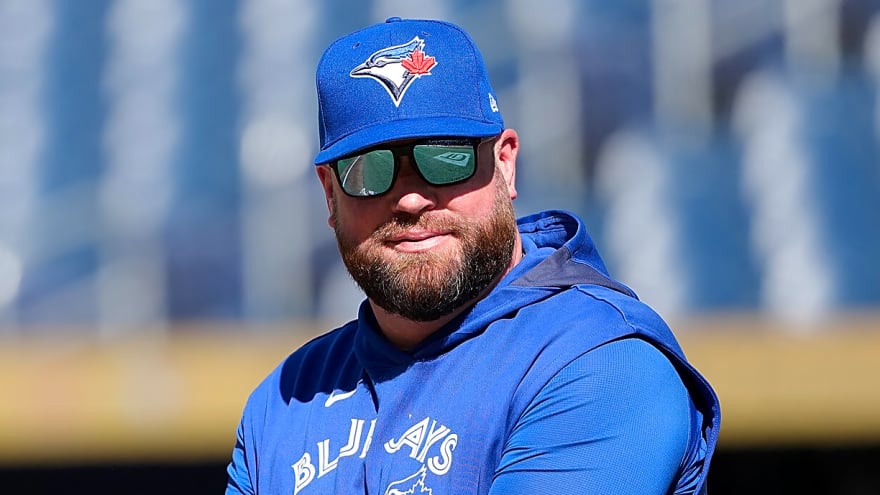
Blue Jays make questionable decision for Game 4 starter
After taking a commanding 2-0 lead in the American League Division Series over the New York Yankees, the Toronto Blue Jays failed to complete the sweep after a historic comeback from the Yankees. After pulling their starter, Shane Bieber, after 54 pitches in 2.2 innings in Game 3, the Blue Jays' bullpen failed to hold things together. Now, they'll turn to their bullpen to try to clinch the series in Game 4. John Schneider makes a questionable decision on Blue Jays' Game 4 starter Deciding to go with their bullpen for Game 4 to help advance them into the American League Championship Series, Schneider and the Blue Jays will rely on Louis Varland to start things off for the Blue Jays, with MLB.com’s Keegan Matheson confirming Varland will be the opener. It's worth noting that Varland gave up a pivotal, game-tying home run to Aaron Judge in Game 3. The Blue Jays acquired Varland and first baseman/designated hitter Ty France from the Minnesota Twins at the trade deadline. Varland had performed well in this series (1.2 innings, one hit) before Judge's devastating blast. Varland picked up a blown save and a loss courtesy of Judge's homer while seeing his postseason ERA balloon from 0.00 to 6.75. The Yankees could get out to an early lead off Varland It's fair to question the Varland choice. Not only is he coming off a disastrous appearance, he has also appeared in each of the first three games of the series, giving the Yankees ample opportunity view and get a feel for his stuff. Of course, he'll also have to face the top of the Yankees lineup, including Judge, who is 7-11 (.636 batting average) with five RBI in the series. Judge, in addition to being scorching hot in the ALDS and delivering the big blow in Game 3, has an excellent track record in elimination games. He has six home runs in elimination games, tying Boston Red Sox legend David Ortiz for the most in MLB postseason history, per MLB Stats. Varland made one previous appearance as an opener for the Blue Jays, against the Red Sox on September 25 when he went 2.0 innings and struck out three. Getting out a lead early will be key to helping rookie right-hander Cam Schlittler settle in and replicate his performance against the Red Sox in the wild-card round, where he pitched eight innings and struck out 12.
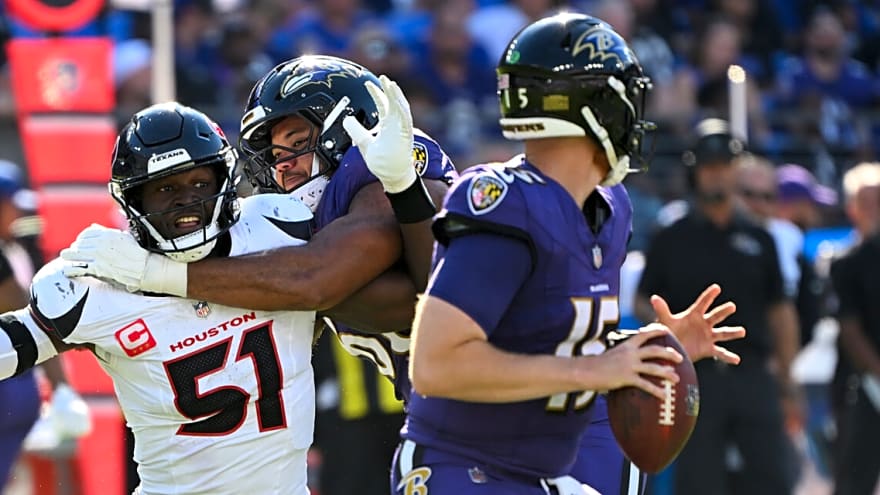
The Big Five: NFL’s biggest surprises of the 2025 season — for better or worse
The 2025 NFL season has already produced unexpected plot twists, with projected playoff teams struggling and preseason afterthoughts becoming the talk of the town. For better or worse, here are the NFL's most surprising teams entering Week 6. 1. Baltimore Ravens (1-4) When things can't possibly get worse for the Ravens, they reach new depths. By losing 44-10 in Week 5 to the Houston Texans, a team it has historically dominated, Baltimore tied for its worst home loss in franchise history. The Ravens made moves this week to improve a putrid secondary, acquiring safety Alohi Gilman from the Los Angeles Chargers for edge-rusher Odafe Oweh and signing free-agent safety C.J. Gardner-Johnson, but that's unlikely to provide immediate relief. In Week 6, Baltimore hosts the Los Angeles Rams, who have the league's second-ranked pass offense, so QB Matthew Stafford should carve up the defensive backfield with wideouts Puka Nacua (who is on a pace for a record-shattering season) and Davante Adams. Baltimore's offense, which is likely to be without two-time MVP starting quarterback Lamar Jackson (hamstring) for the second consecutive week, won't be able to keep up in a shootout. Oddsmakers agree, with Los Angeles an 8.5-point favorite, per ESPN BET. The Ravens appear headed for a 1-5 record entering their Week 7 bye, but they have a much more favorable schedule when they return. According to ESPN's NFL Football Power Index, Baltimore ranks No. 25 in remaining strength of schedule. With a healthy Jackson and an AFC North up for grabs, don't rule out a second-half surge. Yet it's just as likely Baltimore spends all season in a hole it can't get out of. 2. Indianapolis Colts (4-1) The most surprising success story of the season is in Indianapolis, which has surpassed all expectations. Quarterback Daniel Jones, who entered 2025 3-13 in his past 16 starts, is playing like an MVP candidate. Through five games, the No. 6 overall pick of the 2019 NFL Draft is 107-of-150 (71.3 percent) for 1,290 yards, nine total touchdowns and two interceptions. The offense has generated most of the headlines, and for good reason, but the defense has been a revelation as well. The unit has held three of its first five opponents under 300 yards and forced a turnover in each game. Indy's fortune might not change in Week 6 as it hosts the Arizona Cardinals, who are coming off one of the most embarrassing collapses in recent history, blowing an 18-point lead at home to the previously winless Tennessee Titans. Arizona (2-3) has turned the ball over five times in its past two games. With road games remaining against the Chargers, Pittsburgh Steelers, Kansas City Chiefs, Jacksonville Jaguars and Seattle Seahawks, the Colts will soon provide a more accurate gauge on where they stand. But rather than being a Week 1 flash in the pan, Indianapolis looks built for the long haul. 3. San Francisco 49ers (4-1) Colts head coach Shane Steichen's main competition for Coach of the Year should be Kyle Shanahan, who has done a masterful job of leading a hobbled 49ers squad to the top of the NFC West. San Francisco is 3-0 without starting quarterback Brock Purdy, with Mac Jones joining Daniel Jones as one of the year's great reclamation projects. The Niners are also thriving without elite production in the run game from Christian McCaffrey, who is averaging 3.1 yards per carry. San Francisco is already 3-0 in division games, but to maintain its edge in the NFC West, the offense must become more balanced. Through Week 5, the Niners are first in pass offense (290.6 yards per game) but rank last in yards per rush attempt (3.1) and are the league's only team without a rushing touchdown. (Every other team has at least two.) 4. Jacksonville Jaguars (4-1) The Jaguars made the AFC South the only NFL division with two one-loss teams after coming back to win at home against the three-time defending AFC champion Chiefs in Week 5. Jacksonville ranks in the top 10 in the NFL in both scoring offense and scoring defense. The Jaguars have ascending talent on both sides of the ball, with running back Travis Etienne (443 rushing yards) averaging career highs in yards per carry (5.8) and rush yards per game (88.6). First-year head coach Liam Coen has done a good job of running him in advantageous situations, with Etienne only facing a stacked box (eight or more defenders near the line of scrimmage) on 13 percent of his carries, the sixth-lowest rate among qualifying running backs, per NFL Pro. The defense, led by first-year defensive coordinator Anthony Campanile, a former Green Bay Packers linebackers coach/run game coordinator, has more than held up on its end, forcing an NFL-high 14 turnovers. Linebacker Devin Lloyd (four interceptions, one fumble recovery) is one of the league's most improved players. ESPN's FPI gives the Jaguars a 75.4 percent chance to reach the playoffs, the third-highest odds in the AFC, trailing the Buffalo Bills (92.2 percent) and Colts (85 percent). 5. Las Vegas Raiders (1-4) "I'm processing it poorly to tell you the truth," first-year Raiders head coach Pete Carroll, 74, told reporters after his team's 40-6 trouncing at the Colts last Sunday. "I did expect to win right out of the chutes," Carroll added. Technically, Las Vegas did, defeating the New England Patriots (3-2) in Week 1. But four consecutive losses have dimmed hopes of a playoff run and instead raised significant questions, particularly at quarterback. Geno Smith, acquired in a trade with the Seattle Seahawks in the offseason, has regressed significantly after a strong three-year run as Seahawks starter. Through five games, Smith leads the NFL in interceptions (nine), throwing one on 5.5 percent of his pass attempts, more than double his rate from 2022-24 (2.1 percent). Instead of contending for a postseason spot, the Raiders, a longtime doormat, are closer to the No. 1 pick. Las Vegas is projected to end the season with the league's fifth-worst record, per ESPN. The more things change, the more they stay the same.

Cowboys coach makes it sound like personnel change some were expecting won't happen ahead of Week 6

Bengals' Zac Taylor explains shocking Joe Flacco move for Packers game
Roughly 24 hours after outsiders learned that the Cincinnati Bengals were acquiring veteran quarterback Joe Flacco from the Cleveland Browns, Bengals head coach Zac Taylor confirmed that Flacco will start over Jake Browning when 2-3 Cincinnati plays at the Green Bay Packers (2-1-1) this coming Sunday. While speaking with media members, Taylor explained that somewhat surprising decision. Why Zac Taylor believes he can get Joe Flacco "up to speed quickly" "He's already spent a lot of time meeting with us, getting up to speed, so I feel really good about where he's at," Taylor said about Flacco, per Dave Clark of the Cincinnati Enquirer. "You just know him. ...Very comfortable with his style, concepts he's good at, things that we do. All of the terminology, there's a carryover, more so than I would have anticipated. So I feel like we can get him up to speed quickly." Flacco lost three of four September starts with the Browns before the Super Bowl XLVII Most Valuable Player was benched in favor of rookie Dillon Gabriel. According to Pro Football Reference stats, Flacco began Wednesday ranked last in the NFL among qualified players with a 60.3 passer rating for the ongoing season. Additionally, he's 28th out of 32 signal-callers with a 36.7 adjusted QBR. That said, Flacco is a 40-year-old who has seen every defensive concept an opposing coordinator could and will throw his way. Back on Sept. 21, he helped the Browns earn a 13-10 win over the Packers in downtown Cleveland. Zac Taylor likes that Joe Flacco faced this Packers defense in September "It's different than a young quarterback coming in, trying to learn the system and understand what a defense is trying to do to try to challenge you," Taylor added about his decision to start Flacco versus the Packers. "Not only that, but he's played Green Bay this year, so he's already gone through a week of prep. ...Now the communication and the weekly rhythm is maybe different and unique, but he's already prepared for this opponent. So he gets a chance to refresh himself on that, while at the same time just learning our system and our terminology...and how we operate." Shortly after Taylor made his comments, ESPN BET had the Bengals listed as massive 14.5-point underdogs against Green Bay. Perhaps that line and the fact that he was discarded by Cleveland will give Flacco some extra motivation heading into the showdown that will take place at Lambeau Field.

Tennessee Football vs Arkansas Razorbacks Predictions
The Tennessee Vols are set to play against another SEC program inside their home stadium. This will be a very intriguing matchup based off last season's outcome. The Vols will hope to get back at the Arkansas Razorbacks, who will be coached by Bobby Petrino in this game. The Vols On SI staff got together to share their predictions. Take a look: Dale Dowden: Arkansas 31, Tennessee 41 "Tennessee, coming off the bye week, should be fresh, as well as getting a few guys back into the lineup. Arkansas will keep it close; a few key stops on defense, giving Tennessee the ball, creates the 10-point deficit." Offense: "I expect Tennessee to continue on its path of success. The Vols have shown multiple times that they can win in various ways. The two big concerns on offense are the dropped passes, and at times, Aguilar still gets slightly forceful with the ball at times, but overall, I like the offense to take care of business at home." Defense: "The Vols have struggled a bit in the passing defense this year, but overall it's been a bend but don't break type of year. The offense has scored 40 or more points in every game this year. A few stops to give the offense a few extra possessions will win most games." Bold Take: "Boo Carter has over 100 punt return yards and a touchdown." Caleb Sisk: Arkansas 13, Tennessee 38 "Tennessee is coming off a crucial bye week, and although this may be the unpopular opinion, I believe the Tennessee Vols win in blowout fashion, while the Razorbacks struggle to find their stride." Offense: "The Vols have been dominant on the offensive side of the football. I believe that the Tennessee Volunteers will play a clean/semi-clean game with two punts or fewer as well as one or fewer turnovers." Defense: "Tennessee has to be able to contain the quarterback, and I believe they will. This will be the best performance from the Tennessee edge rushers that we will see up to this point, which is very bold, but with the right coaching patterns, it is very possible that Tennessee attacks the stunts and gets home." Bold Take: "Aguilar has four passing touchdowns with one player being on the receiving end of two of those plays. That player being Braylon Staley."
Customize Your Newsletter
 +
+
Get the latest news and rumors, customized to your favorite sports and teams. Emailed daily. Always free!

